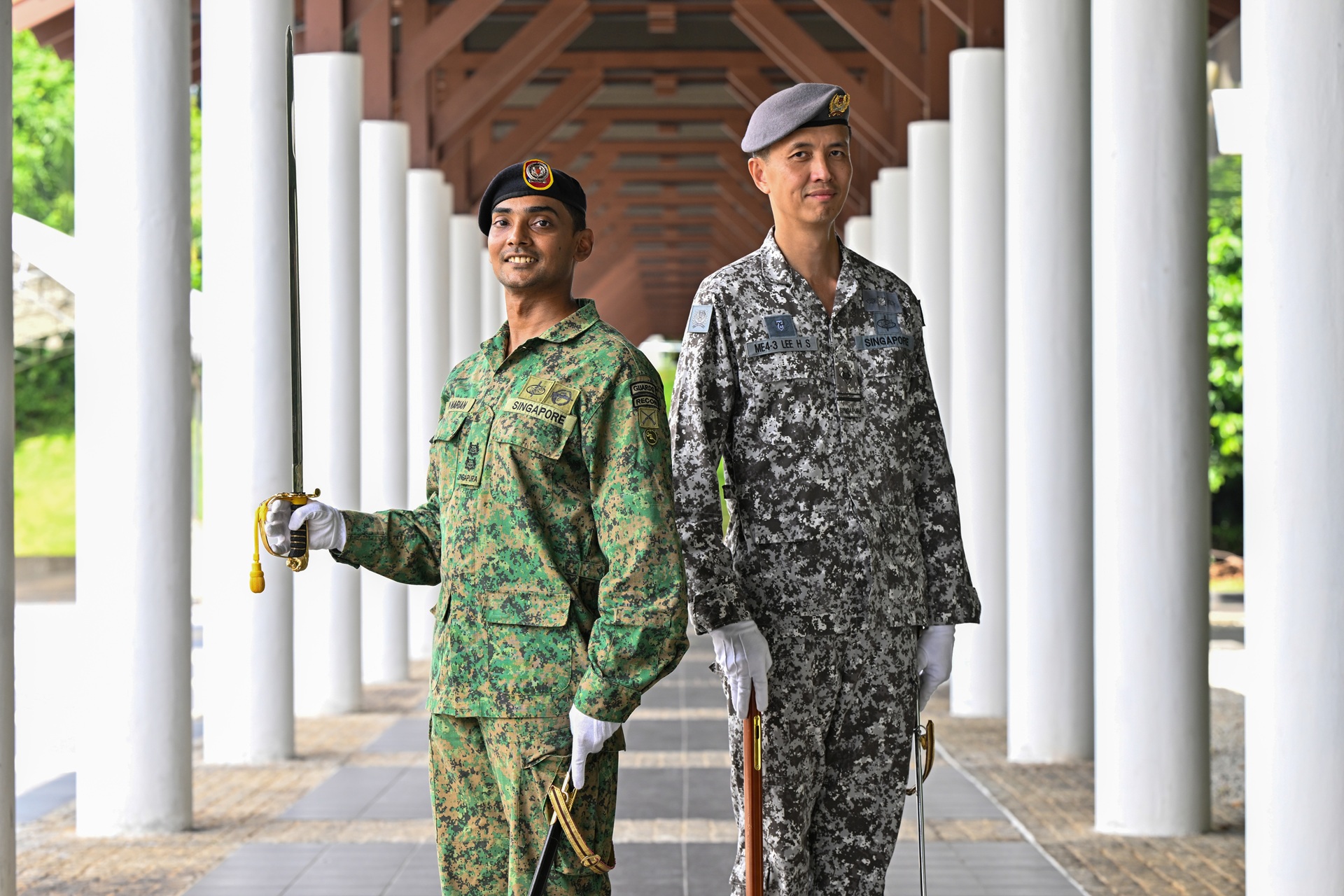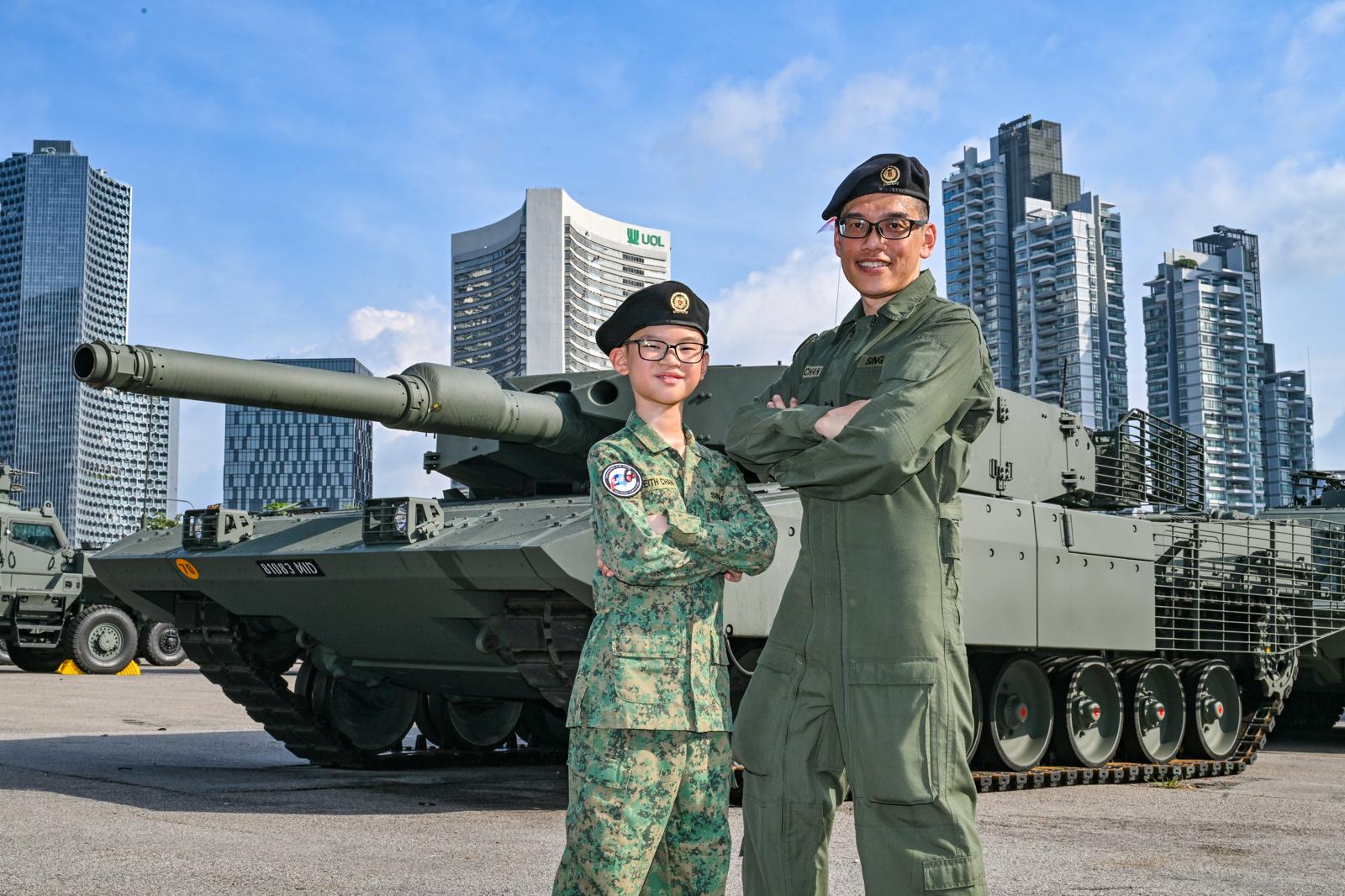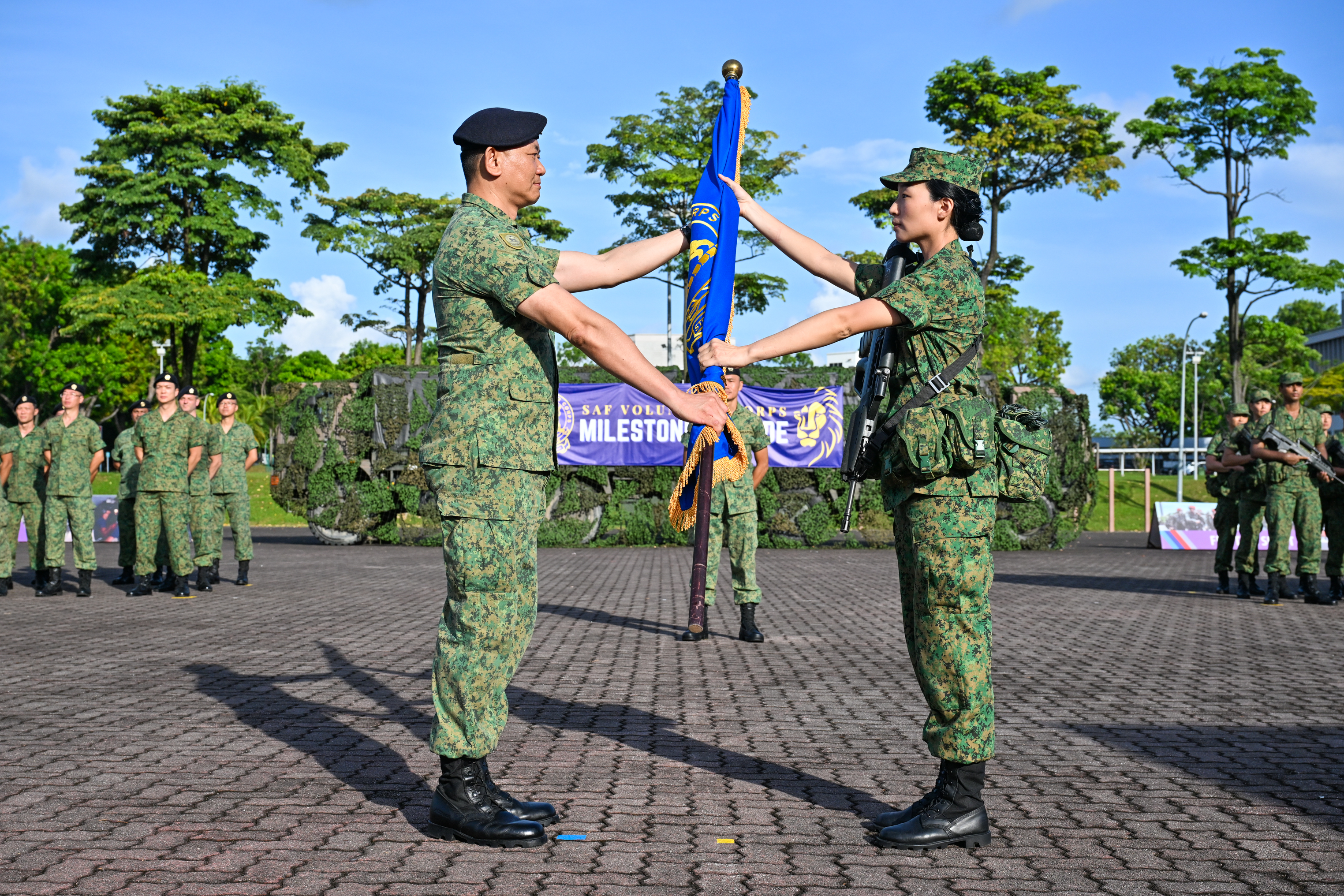DEFENDING SINGAPORE AND ITS INTERESTS
PHOTO // PIONEER Photographers
The transnational nature of security threats in the world means the Singapore Armed Forces (SAF) has to be prepared on all fronts, be it internationally, regionally or within the country.
As the world gets increasingly interconnected, Singapore cannot afford to have a myopic view of the world, because what happens thousands of miles away can potentially affect the stability of our region.
Over the years, the SAF has been honing its capabilities, as well as participating in international security and peacekeeping operations in different parts of the world, all of which directly or indirectly have an impact on keeping Singapore safe.
Deputy Prime Minister and Minister for Defence Teo Chee Hean emphasised this at an overseas service medal presentation ceremony in September last year. "In today's interconnected world, threats such as terrorism, piracy and pandemics can easily spread from one country to another.
"Concerted multinational cooperation is therefore vital to tackle these threats before they are transmitted across national borders."
Expanded range of operations
Like viruses, security threats are evolving and becoming more non-conventional and complex.
Understanding that Singapore is not immune to such threats, the SAF has been playing a role in international security operations to safeguard Singapore's peace and ensure stability in the region.
In doing so, the SAF has widened its spectrum of operations to include peacekeeping, reconstruction, as well as stabilisation efforts.
One example is the SAF's multiple missions in Afghanistan since 2007. To prevent terrorists from using Afghanistan to export terrorism to other parts of the world including Singapore, the SAF has been lending a hand to the multinational reconstruction and stabilisation efforts in Afghanistan.
"Our contributions are not large, but they are in niche areas where we have the expertise and which our international partners find operationally useful," said Mr Teo at another overseas service medal presentation ceremony in January.
Earlier work in Afghanistan concentrated mainly on the deployment of dental and engineering project teams to Bamiyan province, to provide dental care and proper infrastructure for the people.
From 2008 to 2009, the SAF also sent medical and surgical teams to Uruzgan province, to treat casualties that included members of the International Security Assistance Forces (ISAF), Afghan National Security Forces and Afghan civilians.
From September 2009, Weapon Locating Radar teams were deployed to Uruzgan to provide early warning of rocket attacks and enhance force protection measures for ISAF personnel at the base.
More recent contributions by the SAF to Afghanistan include the deployment of an Unmanned Aerial Vehicle Task Group to Uruzgan, as well as military institutional trainers to Kabul, both from August last year.
The UAV team in Uruzgan, Afghanistan, conducting surveillance and reconnaissance operations to enhance security of the troops and the locals there.
The Construction Engineering Team, deployed to Bamiyan in 2008, supervising the construction of a security wall. They also helped in the construction of a Regional Health Training Centre.
While the former aims at providing surveillance and reconnaissance capabilities to enhance the security of Afghan locals and the ISAF troops, the latter trains the Afghan National Army (ANA).
Team leader of the military institutional trainers Lieutenant Colonel Nicholas Seow said that besides establishing an artillery school and doctrine for the ANA, a highlight during his deployment last year was teaching the Afghan artillery personnel to conduct indirect fire missions. This involves employing a forward observer when firing at targets not visible from the gun position.
"They conducted direct fire missions only in the past, so being able to conduct indirect fire missions now represents a significant achievement in the development of the Afghan artillery capability," he said.
A Landing Ship Tank with two Super Puma helicopters on board, on its way to the Gulf of Aden for counter-piracy operations.
Help in troubled waters
The SAF is also doing its part to combat the growing issue of piracy in the Gulf of Aden. Last year, a Landing Ship Tank with two Super Puma helicopters on board were deployed to the pirate-infested waters from June to October.
During the deployment, it launched 96 helicopter sorties to provide air surveillance, and responded to six calls for assistance.
Naval Warfare Systems Engineer Military Expert 2 Lui Jian Fong, who was part of that deployment, considered it a rewarding mission. "This time, it's to deter piracy. It is very meaningful to take part in these operations, knowing that the SAF is always ready to respond."
Commending the men and women of the SAF task group, Deputy Commander Combined Maritime Forces Commodore Tim Fraser said: "In the conduct of their missions, they have demonstrated the professionalism and commitment that we have all come to expect and respect from the SAF."
The SAF also accepted an invitation to command the Combined Task Force (CTF) 151 for the second time from March to June this year.
This invitation came after Rear-Admiral Bernard Miranda successfully concluded a command tour of the multinational counter-piracy task force last January
to April.
Strong regional network
The security threats faced by Singapore, such as environmental changes, terrorism and pandemics, are common to countries in the Asia-Pacific region.
Tackling these complex challenges requires a strong regional security architecture that involves stakeholders solving shared problems collectively, as no country can battle these issues alone.
Contributing to that architecture are existing groupings and activities that provide opportunities for dialogue among countries in the region.
These include the ASEAN Defence Ministers' Meeting (ADMM), the Five Power Defence Arrangements (FPDA) Defence Ministers' Meeting and the Shangri-la Dialogue, in all of which the Ministry of Defence plays an active role.
Just four and a half years after the first ADMM was convened in 2006, the first ADMM-Plus meeting was held in Hanoi last year, with the inclusion of eight countries outside ASEAN - Australia, China, India, Japan, New Zealand, the Republic of Korea, Russia and the United States.
The first ADMM-Plus meeting last October provided an opportunity for ASEAN and eight other countries to discuss shared issues on defence and security.
Mr Teo commented on the meeting after it was concluded: "The ADMM-Plus meeting today is a historic one. For the first time, ASEAN has got together the eight key partners in one meeting. And we were able to have a good discussion and exchange on issues of concern to us in the defence and security area.
"The focus of the meeting was very much on cooperation, building a community of cooperation based on a confluence of shared interest."
He added: "We talked about traditional issues and also non-traditional issues in the security arena and we agreed that we would form Experts' Working Groups to increase capacity among the ADMM-Plus countries in the following areas: maritime security, humanitarian assistance and disaster relief, counter-terrorism, peacekeeping operations and military medicine."
The Shangri-la Dialogue, which is held annually in Singapore, fills a unique niche by gathering defence ministers, officials and academics in the region for open and candid exchanges. The 10th Shangri-la Dialogue will take place this June.
The 8th FPDA Defence Ministers' Meeting will be held in Singapore on 1 Nov - the day the FPDA was founded 40 years ago. Over the years, the grouping has played an important role in enhancing regional security.
Troops in action at Exercise Wallaby 2010. The annual air-land integration exercise is held in Australia to provide troops with a different operating environment.
Milestones in defence ties
Underlying the strong regional security architecture are close relations with countries in the region. The SAF has been keeping warm ties with Singapore's neighbours and key partners through bilateral exercises and interactions.
In fact, the year 2010 saw many milestones achieved in defence relations between Singapore and its neighbours.
The Republic of Singapore Air Force (RSAF) and the Indonesian Air Force
(TNI-AU) commemorated 30 years of bilateral training during Exercise Elang Indopura last December, while the Republic of Singapore Navy (RSN) and the Royal Brunei Navy (RBN) celebrated the 30th anniversary of Exercise Pelican last June.
Indonesian Defence Minister Dr Purnomo Yusgiantoro, who was at the opening ceremony of Exercise Elang Indopura last year with Mr Teo, said: "I can say that a marriage of 30 years is not easy...if we can get 30 years of marriage, we can do it more in the future.
Some ideas which we are discussing now are about how we can strengthen and further our defence relations, as well as our country-to-country relations."
Chief of Staff of the TNI-AU Air Chief Marshal Imam Sufaat added: "Exercise Elang Indopura serves as an important platform to foster mutual understanding and broaden cooperation among past and present exercise participants, thereby strengthening bilateral ties."
In July 2010, the RSAF and Royal Australian Air Force also celebrated the 20th year of Exercise Pitch Black, a multinational air combat exercise.
From September to November last year, the SAF marked 20 years of training at Australia s Shoalwater Bay Training Area, as it conducted its annual air-land integration exercise, Exercise Wallaby, there.
Close global relations
Beyond the region, Singapore maintains strong ties with countries such as the US and China.
The US remains one of Singapore's strongest and closest defence partners. Besides having its new Sikorsky S-70B naval helicopters based in the US from November 2009 to September last year for integration training with its stealth frigates, the SAF conducted its first High Mobility Artillery Rocket System (HIMARS) battery live-firing exercise last November in Fort Sill, Oklahoma.
In addition, the SAF continues to maintain its F-16 and F-15SG fighters, as well as Chinook and Apache helicopter training detachments in the US.
With China, the SAF conducted the second edition of a joint training exercise with the People's Liberation Army (PLA). Held in Singapore last November, the exercise focused on counter-terrorism security operations for major international events.
Closer to home, Singapore continues to collaborate with Malaysia and Indonesia under the ambit of the Malacca Strait Patrols to enhance maritime security through combined air and sea patrols.
The close defence ties between the SAF and the armed forces of neighbouring countries foster mutual understanding and expand the SAF's training space, while sharpening the operational readiness of its personnel.
A fortified home ground
While the SAF contributes to international and regional peace and security, it does not neglect its core role of defending Singapore.
To excel in this mission, the SAF has consistently been developing its people as well as investing in effective platforms as part of its ongoing transformation into the 3rd Generation force.
Through prudent defence spending, the SAF has beefed up its arsenal with the introduction of technologically-advanced hardware in the past year.
Besides the return of six Sikorsky S-70B naval helicopters to Singapore after integration training in the US, the first local F-15SG fighter squadron was inaugurated last year.
The Army received a boost to its firepower when its first HIMARS platform was delivered last July, and the Navy saw an addition to its fleet with the launch of its second Archer-class submarine, the RSS Swordsman, in Sweden last October.
While the individual platforms come with powerful and enviable features, it is the multiplier effect from the networking of various systems and capabilities that provides more bang for the buck and sharpens the SAF's operational edge.
For example, the S-70B naval helicopter can fire torpedoes and is equipped with a dipping sonar to detect submarines. Combining these with the frigate's sophisticated command and communications suite, the naval helicopters enable the frigates to perform anti-surface and anti-submarine missions at much longer ranges.
Moving along the networked chain, the frigates function as key nodes in the Integrated Knowledge-based Command and Control (IKC2) network, which is the heart of the 3rd Generation SAF where a common, up-to-date situation map is shared throughout the SAF.
Equipped with Combat Management Systems that comprise data fusion, sense-making and decision-support engines, the frigates have a keener situational awareness and are able to orchestrate battles at sea by coordinating air and sea attacks on hostile targets.
At the inauguration ceremony of the naval helicopters into the RSAF's 123 Squadron on 18 Jan, Commanding Officer of the squadron Senior Lieutenant Colonel (SLTC) Jonathan Tan said: "In a way, the helicopter serves as the extended arm of the ship it is embarked on, allowing personnel to act faster, see further and make better operational decisions."
The benefits of a networked defence force extends all the way to personnel on the ground. Said Mr Teo in an interview ahead of last year's SAF Day in July:
The HIMARS, which was delivered to the Army last July, is capable of the long-range engagement of targets and a rapid rate of fire.
Minister for Education and Second Minister for Defence Dr Ng Eng Hen (third from left) unveiling the squadron plaque to signal the inception of the naval helicopters into the RSAF's 123 Squadron.
"What this means is that each soldier, sailor and airman in the SAF is able to deliver more capability, not just because of the equipment he has, but also because of the network and the systems which he can draw upon."
Inaugurated into the RSAF's 149 Squadron last year, the F-15SG fighter jets enhance Singapore's air defence capability.
Staying ever ready
As the SAF goes full steam ahead towards the completion of its transformation in the next few years, it will continue to hone its capabilities to become a potent fighting force.
This will enable it to play a larger role in international security, and more importantly, be ever ready when called upon to protect Singapore's interests in good times and in bad.
As Chief of Defence Force Lieutenant-General (LG) Neo Kian Hong put it when he reminded troops on New Year's Eve standby duty to stay vigilant: "It is said that those who mean us harm need to succeed only once, but we need to succeed in defending Singapore all the time."
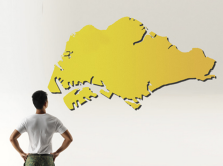
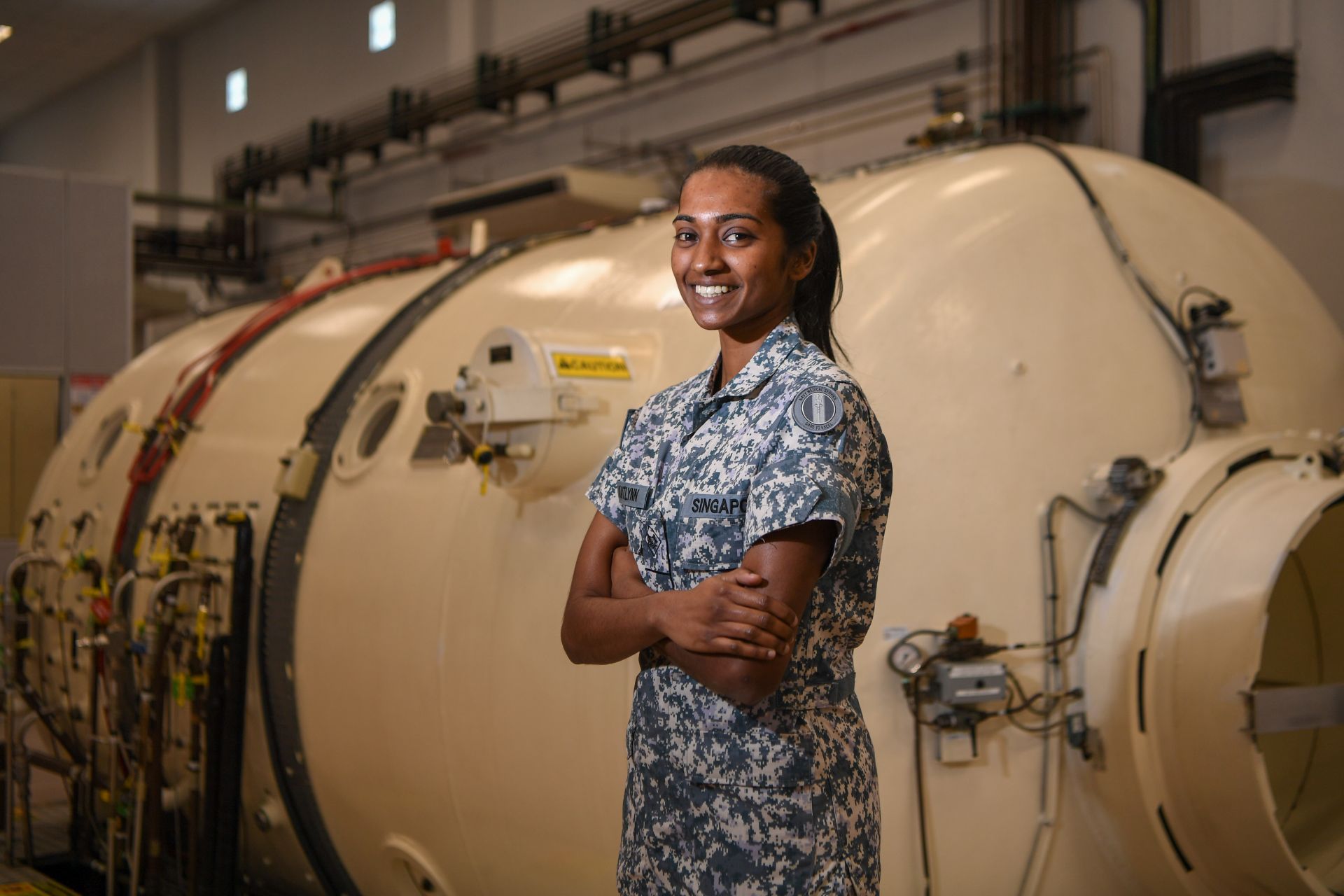
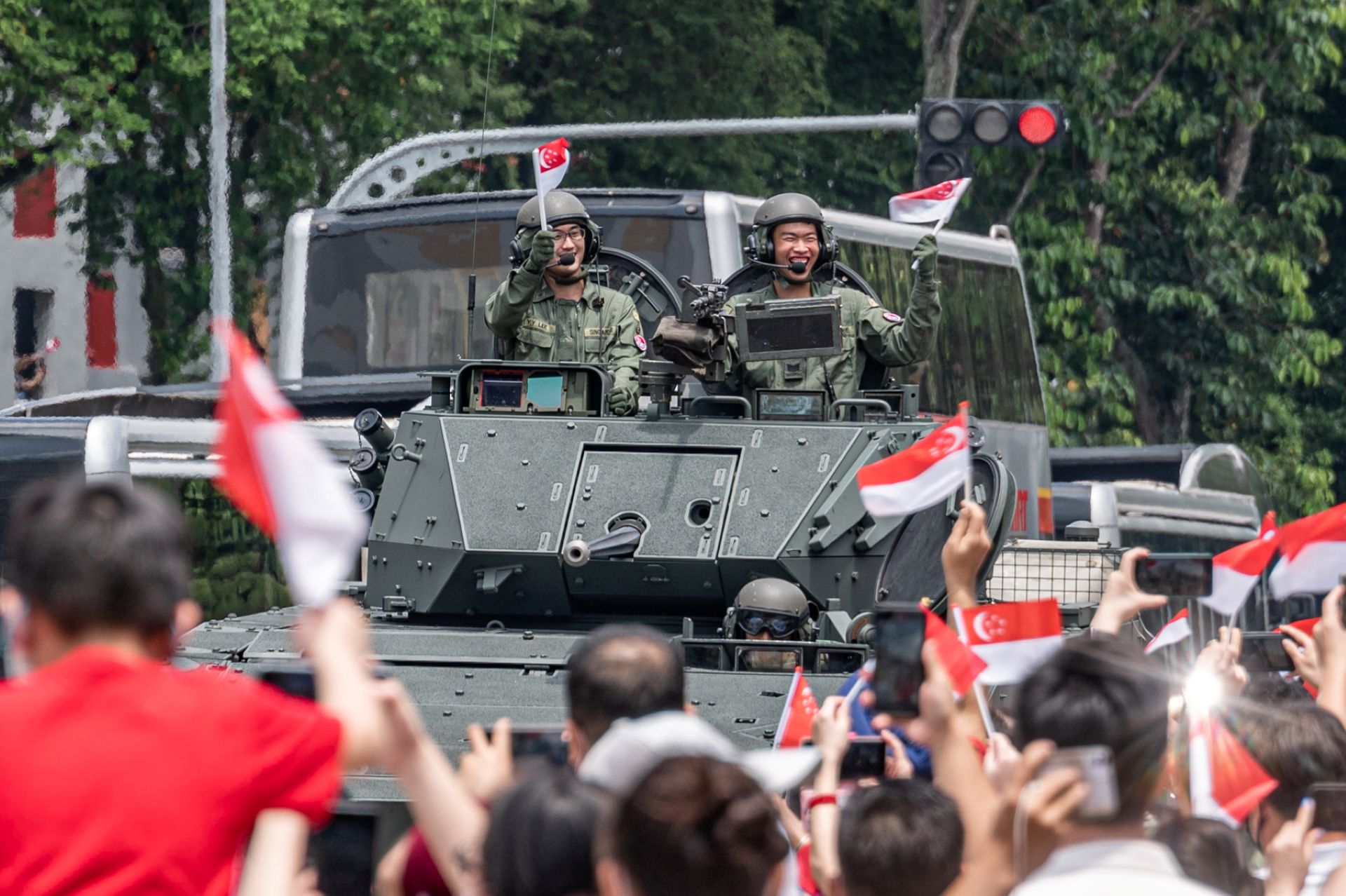
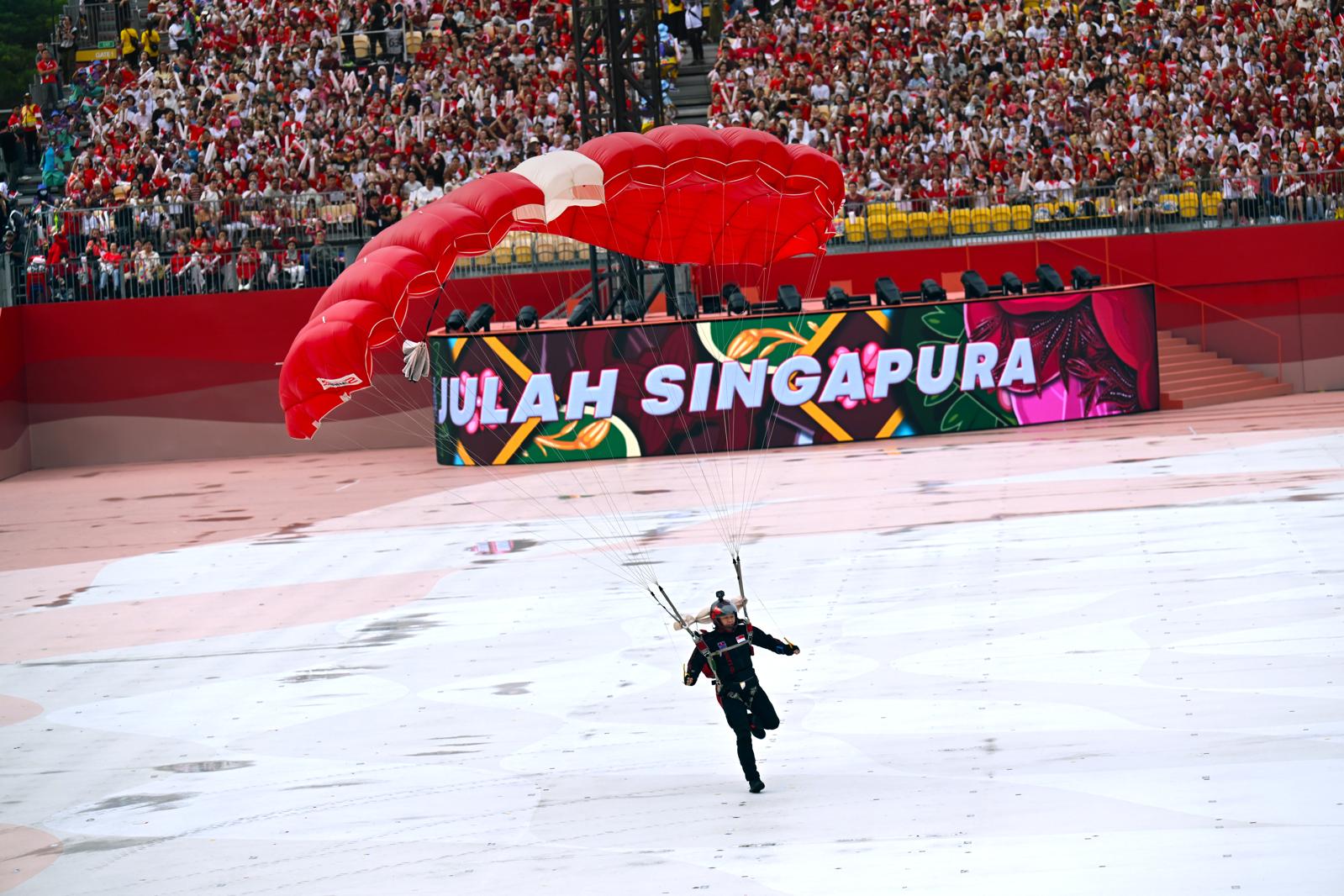
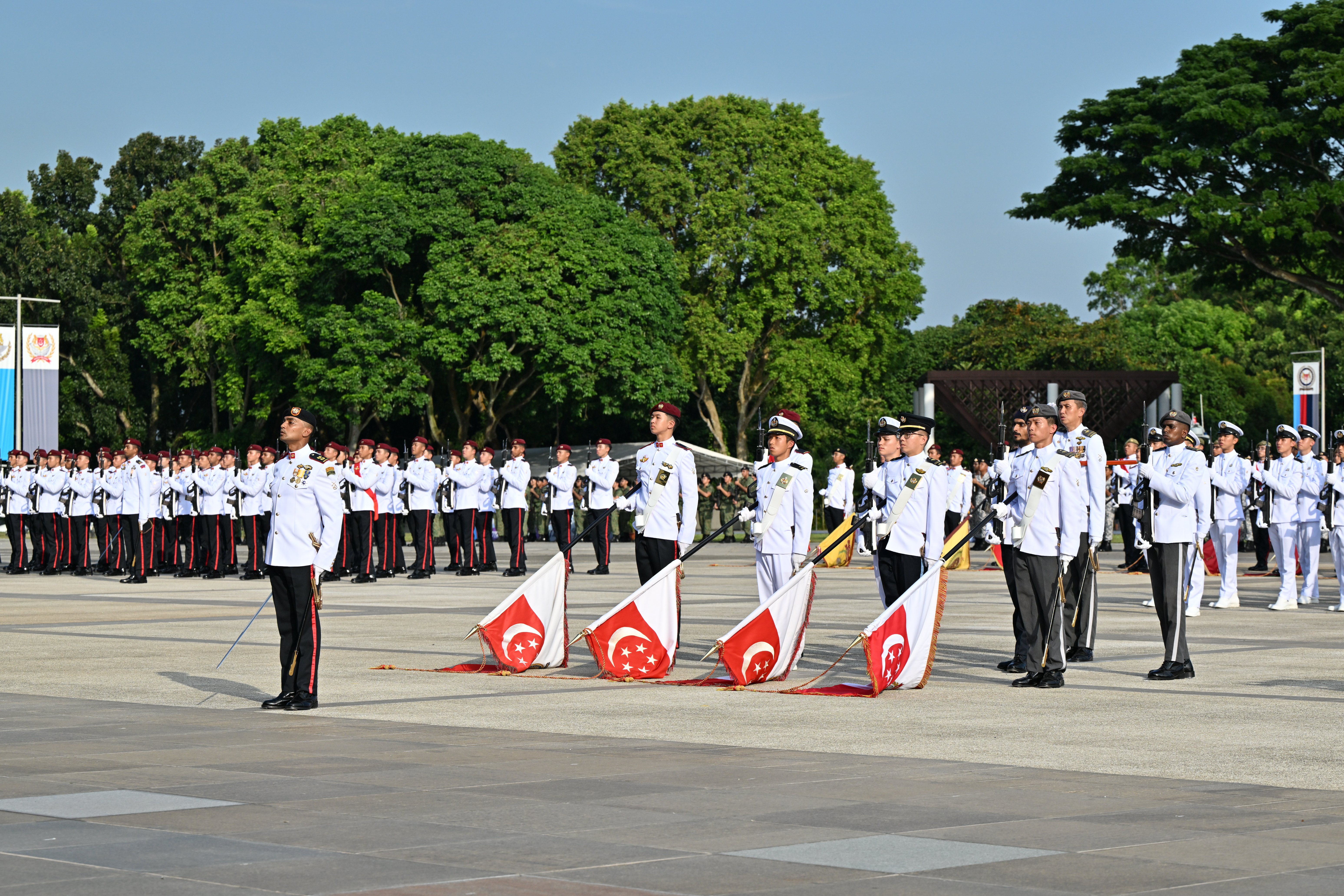
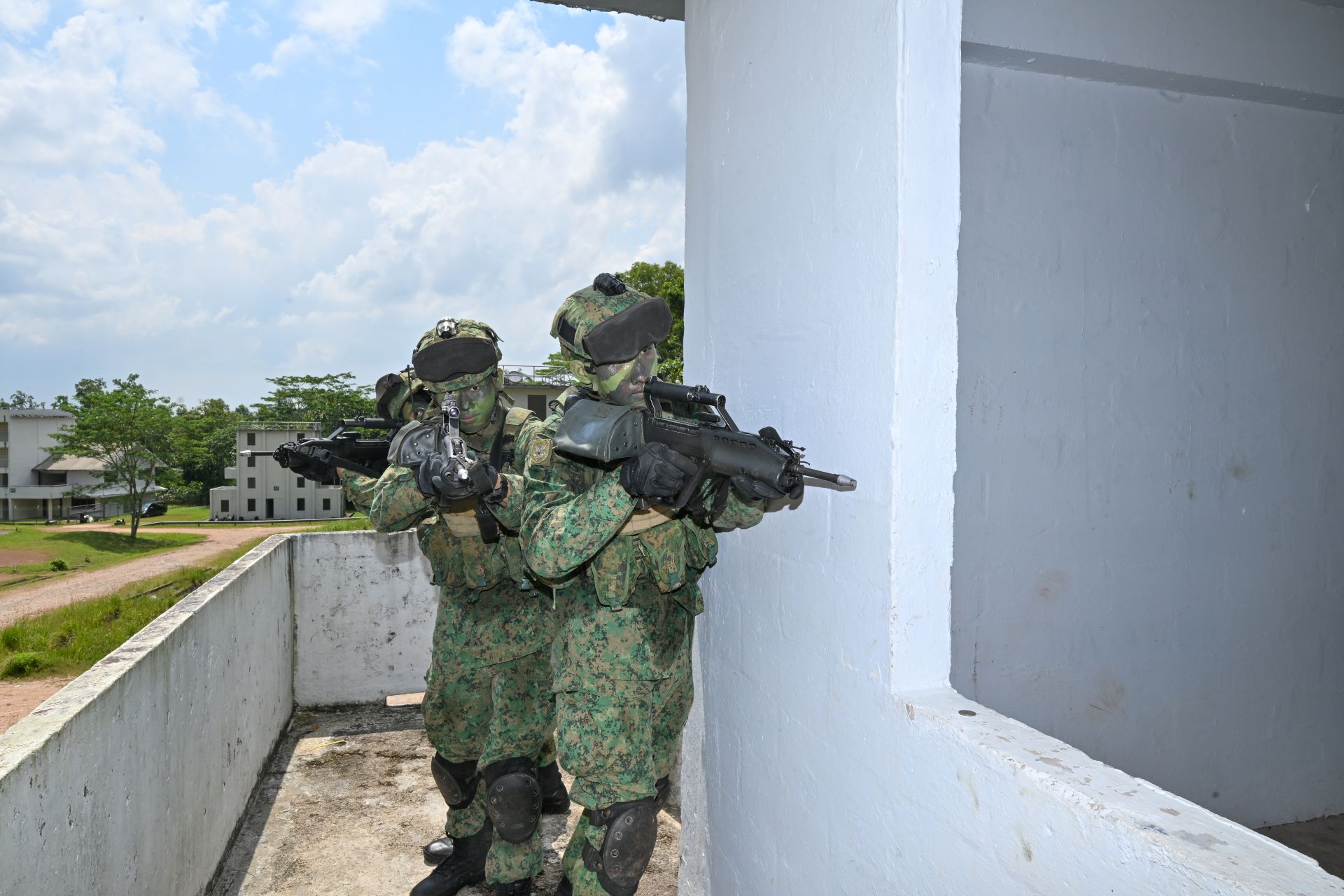
.jpg?sfvrsn=b5383902_1)
.jpg?sfvrsn=4eb1b86e_1)
